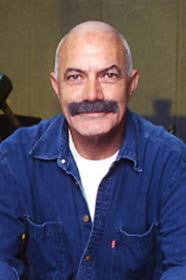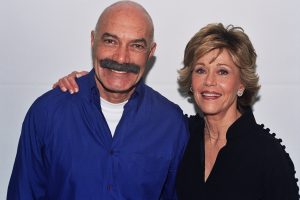The thriller The Adjustment Bureau, starring Matt Damon, will be released by Universal Pictures on March 4.
From the beginning of principal photography, Emily Blunt was upfront about her lack of formal dance training. “I was honest. I’ve never danced in my life,” she says. “I met George, and I said, ‘I’ll work my ass off for you if you let me do this.’”
The performer immediately asked to meet with the film’s choreographer, Benoit-Swan Pouffer, from Cedar Lake Contemporary Ballet, which would become the actual company that Nolfi wrote into the film’s script.
Founded in 2003 by Nancy Laurie and artistically directed by Pouffer, Cedar Lake Contemporary Ballet of New York City has a core group of 16 dancers, and it emphasizes acquiring and commissioning new works by the world’s most sought-after, emerging choreographers. With performances often incorporating multimedia presentations, Cedar Lake is known for its daring, athletic movements and its integration of ballet into contemporary and popular forms.
When Nolfi approached Pouffer to have his company involved in the film, Nolfi discussed a female dancer in the role of Elise. Remembers Pouffer of his earlier conversations with Nolfi: “I said, ‘Okay, but make sure that it is a dancer because I’ve seen many movies fail because it’s difficult to show how a dancer is.’ Then a month later they said, ‘We found the actress: Emily Blunt.’ I said, ‘She’s not a dancer. What are we going to do?’ But it’s been such a pleasure. Emily came in full-force, and I felt that she wanted to get the style and the behaviors; she’s done an amazing job.”
Pouffer’s objective was never to make Blunt a trained dancer. He felt the best way to approach teaching a non-dancer to perform would be to draw the parallel to her acting skills. “I was here to explain to her that some dancing is not necessarily done by dancers. It’s movement and understanding phrasing and theatricality when you dance,” the choreographer explains. “It’s like learning dialogue, learning a script.”
In fact, he used the emotional tones of the screenplay to inform his choreography for Elise’s numbers. “The solo scene was interesting to work with Emily because it’s a moment where she’s asking herself some questions,” he says. “She’s going through something. So we had to, movement-wise, express the step of anxiety.” Throughout all the training, Blunt was game for the ideas her instructor aimed to execute through her movements. “Emily’s special,” Pouffer comments. “She’s strong. She’s not scared.”
Producer Carraro, who had recently worked with Blunt in London on The Wolfman, was confident that she had the work ethic and athletic ability to take on the challenge. Still, the prospect of training to become Elise was initially intimidating for Blunt, who not only had to achieve the precision and form of a professional dancer on screen, but also didn’t want to disappoint the Cedar Lake professionals whom she would be representing. With Pouffer instructing her on dance and a personal trainer working her out for hours a day, six days a week, Blunt began an entire lifestyle overhaul that transformed her body into that of a dancer’s.
“The training was unreal. I hurt every day. It’s one thing to say, ‘I’ll do it for you,’ but it’s another thing to actually do it,” Blunt says of her promise to Nolfi. “It was hell to learn at first, and then it became invigorating, and one of the biggest, life-expanding experiences I’ve ever had.”
Moore notes that since Blunt was cast in late July 2009 and the film began shooting in New York in September, she didn’t have many months to train. Though the performer did work with body doubles, and films have the luxury of shooting at specific angles and cutting around talent in postproduction, many of the cast and crew admit that Blunt rarely relied on visual crutches to express her character in motion.
Remembers Nolfi: “Emily came out here a couple months before production and she was dancing five or six days a week and working out, taking it seriously on the physical performance level.” The director also stresses that Blunt was not learning simply standard ballet techniques. “It’s ballet-based contemporary dance, so it doesn’t look like your mother’s or father’s ballet. It looks like modern dance, and it is set to modern music; you couldn’t possibly do this dance without a lot of ballet training.”
Her co-star agrees with his director’s assessment. “I’m normally the actor who ends up having to do a boatload of training for things,” says Damon. “On this one, I just sat back and watched Emily; she was just so great and utterly believable.”










